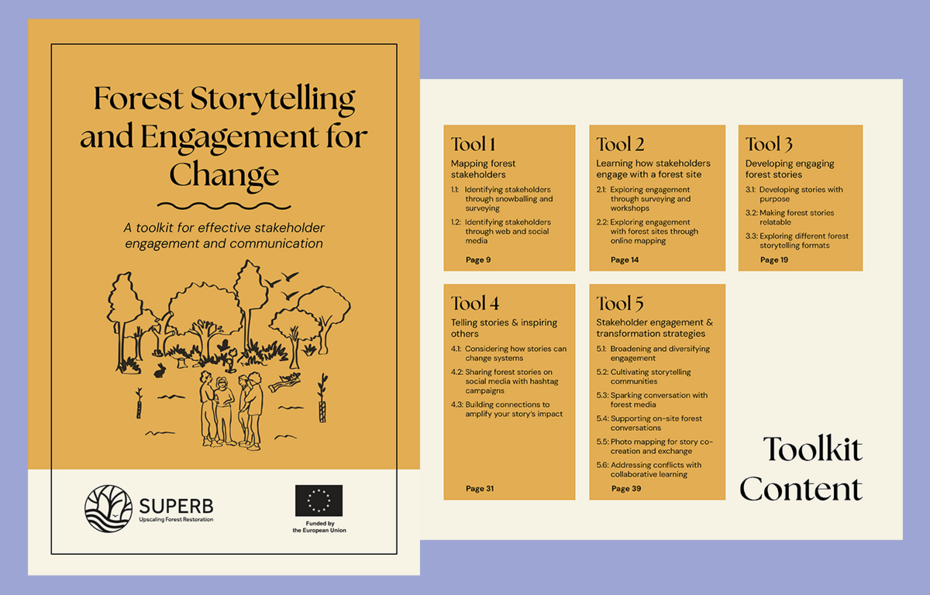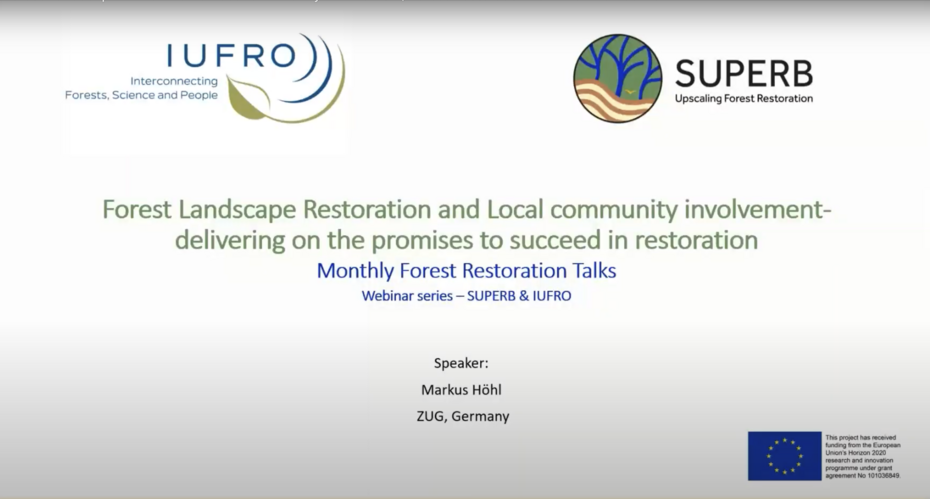
2.8 Co-design/ development with stakeholders

Co-design and development of any restoration approaches and plans together with stakeholders should start early on in the process so that their input, ideas and perspectives can be incorporated into any strategy. The joint design and development should not be a one-off exchange but an ongoing process with feedback and exchange loops as plans are becoming more concrete.
Successful forest restoration and monitoring requires the active involvement of diverse stakeholders – including other forest owners, policymakers, local communities, and scientists. Engaging these groups throughout the restoration process helps ensure that objectives are context-specific, operationally feasible, and broadly supported, and diverse stakeholders also bring in different knowledge that can strengthen restoration. This process also builds trust, legitimacy, and long-term commitment among all parties, and enhances transparency and accountability. Establishing robust communication channels and knowledge exchange across sectors is equally critical. Sharing data, experiences, and best practices fosters alignment, enables adaptive management, and ensures that restoration strategies are grounded in both scientific evidence and local ecological knowledge.
If you aspire to a co-design process, this process involves joint development of restoration goals, strategies, and implementation methods. Stakeholders co-create not only the technical aspects (such as what species to plant or which areas to prioritize) but also the governance structures and decision-making processes. This helps balance different interests and ensures that project outcomes are relevant to local needs (more info on potential conflicts and mediation approaches you will find below in the related resources).
The co-design process should be iterative, with regular feedback loops allowing stakeholders to review progress, adapt strategies, and scale up successful practices over time. Setting up co-creation takes time and also requires trust-building – amongst other in terms of people feeling their word counts, that they are being listed too, that they have something to gain and have 'a stake' in the restoration process.
Potential formats:
Field visits: Field visits create a shared understanding of the site’s conditions, challenges, and opportunities. Being on-site helps ground discussions in reality, sparks practical ideas, and builds trust among participants. Field visits can include guided walks, on-site mapping, identifying key features, and open discussions. These activities allow stakeholders to contribute local knowledge, visualize potential interventions, and collaboratively shape restoration plans in a way that reflects both ecological needs and community priorities.
Stakeholder Workshops: Structured workshops organized at key project stages (goal setting, planning, implementation, review) facilitate dialogue, consensus-building, and joint decision-making.
Participatory Mapping and Planning: Tools such as participatory mapping help stakeholders define landscape boundaries, identify restoration priorities, and plan interventions collaboratively.
Joint Monitoring and Evaluation: Stakeholders are involved in monitoring project outcomes and evaluating success, ensuring that both ecological and social indicators are considered.
Shared Ownership: By involving stakeholders at every stage, co-design fosters a sense of ownership and commitment, increasing the likelihood of long-term stewardship and sustainability.
Related resources
Forest Storytelling and Engagement for Change
Forest Storytelling and Engagement for Change offers a range of practical tools and starting points to support those living and working with forests to map which kinds of stories are told and to explore how to tell stories that can make a difference.
Forest Landscape Restoration & Local community involvement
In the third of the SUPERB/IUFRO “Monthly Forest Restoration Talks”, hosted in January 2023, Markus Höhl, a technical project manager at the International Climate Initiative (IKI), discusses how to fulfil promises of local community involvement to deliver on forest landscape restoration.




